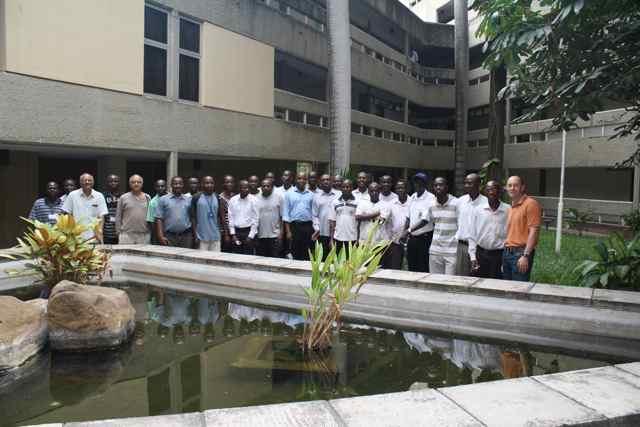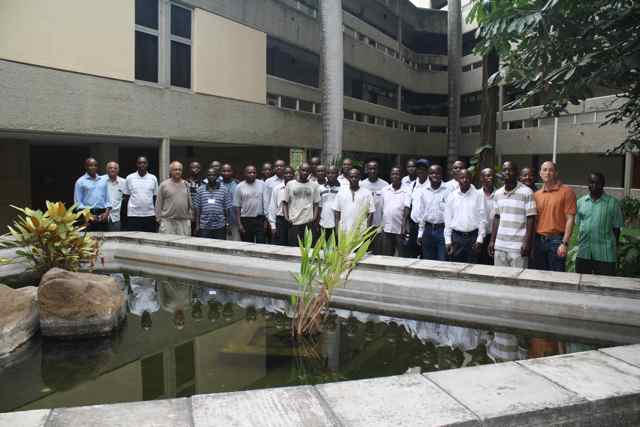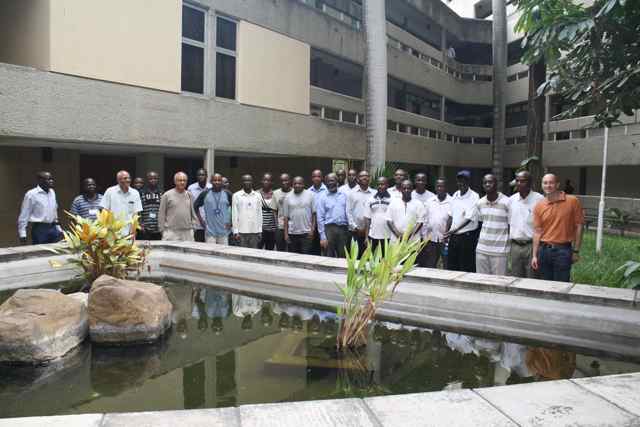Topics and course material
|
The first school
- Linear dependence, bases, dimension - assuming knowledge of row
reduction of linear systems of equations, an assumption that was valid.
Application: Existence of interpolation polynomials.
- Matrix of a linear transformation, kernel and range; how to
calculate basis for these using row reduction - free and basic variables.
Dimension formula. Membership problem for a subspace. Change of basis.
- Positive definite matrices, Gram matrices, inner product spaces(some
L^2-example), least squares approximations and normal equation.
Application: formula for least squares approximation of a line to a point
set.
- Gram-Schmidt, using this to give alternative solution of least
squares decomposition. QR-decomposition(but no application)
- Eigenvalues and eigenvectors, every complex linear map has an
eigenvalue.
- Generalized eigenvalue decomposition. Upper triangular block
decomposition (not quite Jordan canonical form, in the process dealing
with nilpotent maps, associated filtration(s) and adapted bases.
- Real spectral theorem(following Axler)
- Singular value decomposition and pseudoinverse, connection with
least squares solutions to linear systems of equations.(following Olver)
The second school
- norm of a linear operator on C^n; and different expressions for it (as max ||A(x)||, as max |x*Ay|, as the maximum of singular values; etc.
- examples of some other norms; their merits and demerits; eg the operator norm is very difficult to evaluate even in low dimensions, the Hilbert-Schmidt norm is easy but does not always make sense in infinite dimensions.
- special properties of Hermitian, normal, unitary matrices
- some facility with diagonalisation and its uses
- Schur's theorem that every matrix is unitarily equivalent to an upper triangular matrix.
- some idea of "invariance" of various objects under transformations; eg similarity would preserve trace, det, eigenvalues, invertibility, rank but not norm, singular values, hermiticity.
- counting of dimensions of subspaces and their intersections. (just simple things like if two or more subspaces have sufficiently high dimensions then their intersection is nonzero.)
- the google page rank algorithm
- Inequalities for sums of eigenvalues of Hermitian matrices (starting with Weyl, going through various minmax principles, and an allusion to Horn's problem)
- statements of these as perturbation bounds
- the problems, solved and unsolved for non-Hermitian matrices
- continuity of roots of polynomials and of eigenvalues---qualitative and quantitative
|
| Additional material |
Google's PageRank Algorithm
- Wikipedia article about Google PageRank algorithm
- M. Bianchini, M. Gori, F. Scarseli, Inside PageRank, ACM Transactions on Internet Technology, Vol. 5, No. 1, February 2005, pp. 92-128.
- A. N. Langville and C. D. Meyer, Deeper Inside PageRank, Internet Mathematics Vol. I, No. 3, pp. 335-380.
- K. Bryan and T. Leise, The $25,000,000,000 Eigenvector: The Linear Algebra Behind Google, SIAM Review, Vol. 48, No. 3. (2006), pp. 569-581.
Group pictures from this event
  
|





